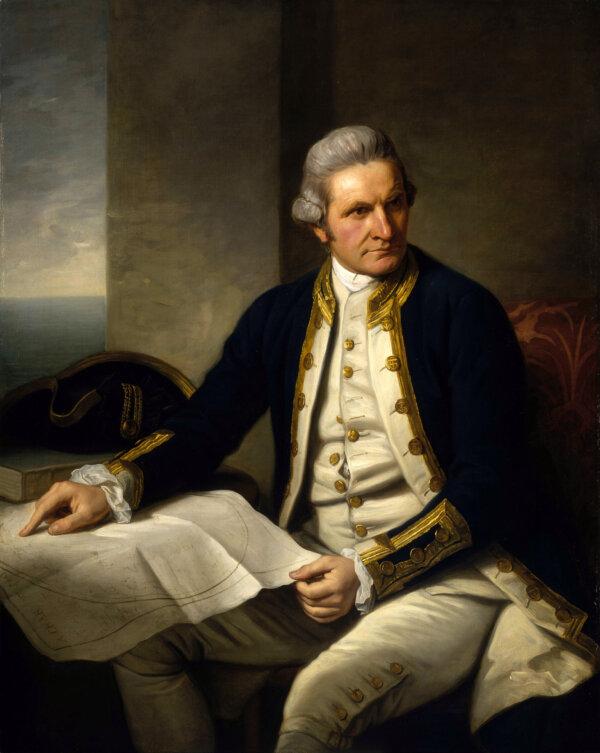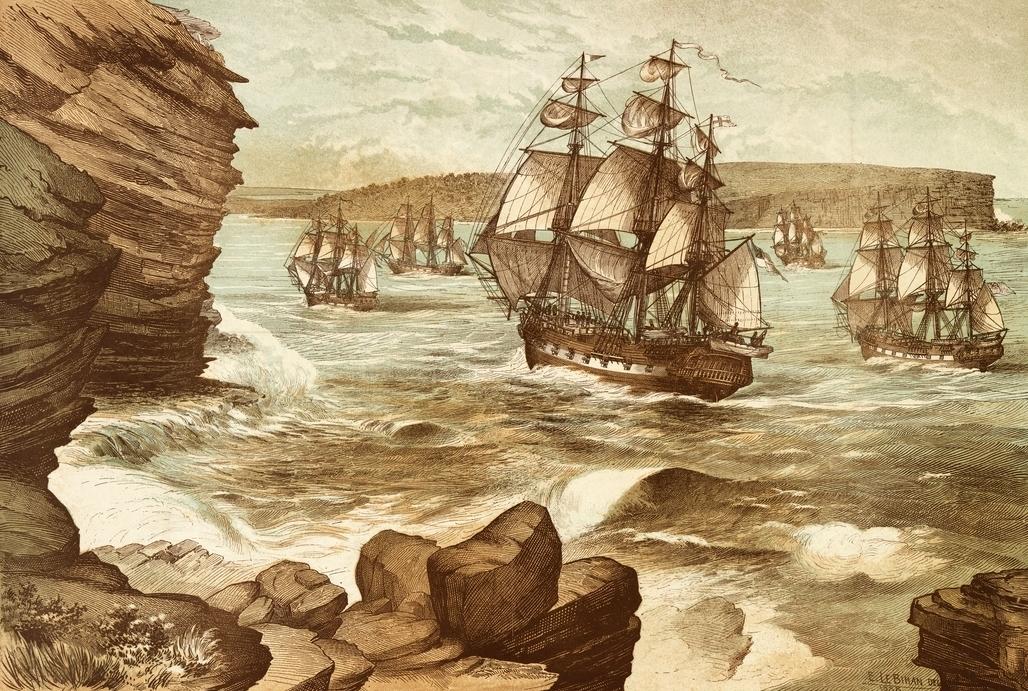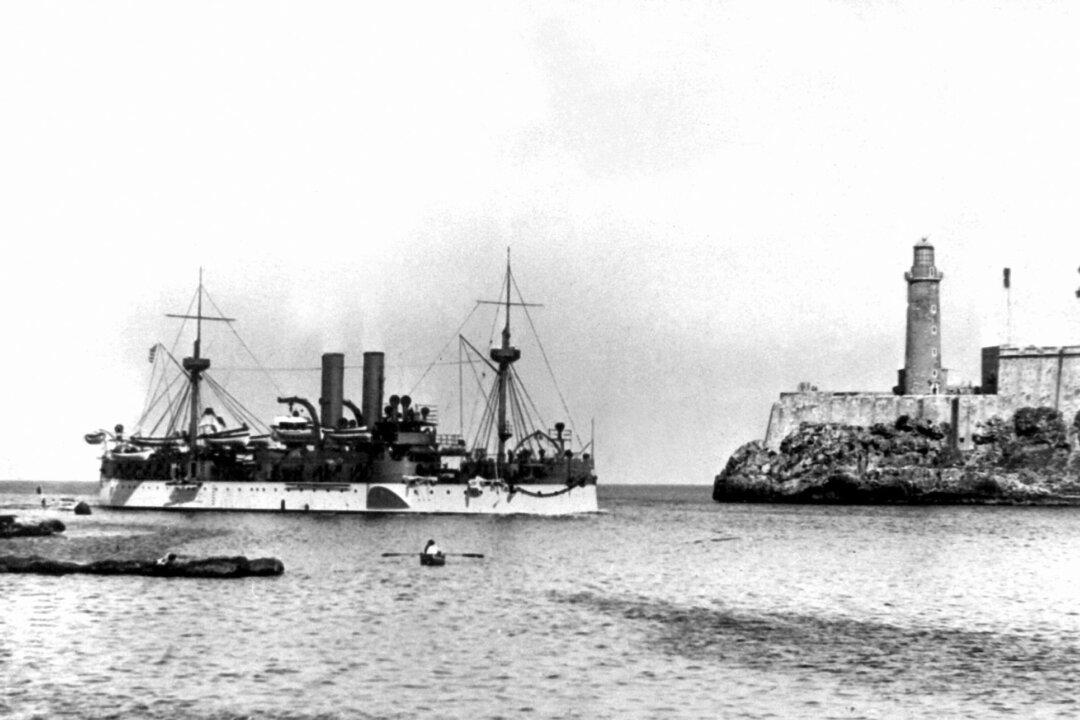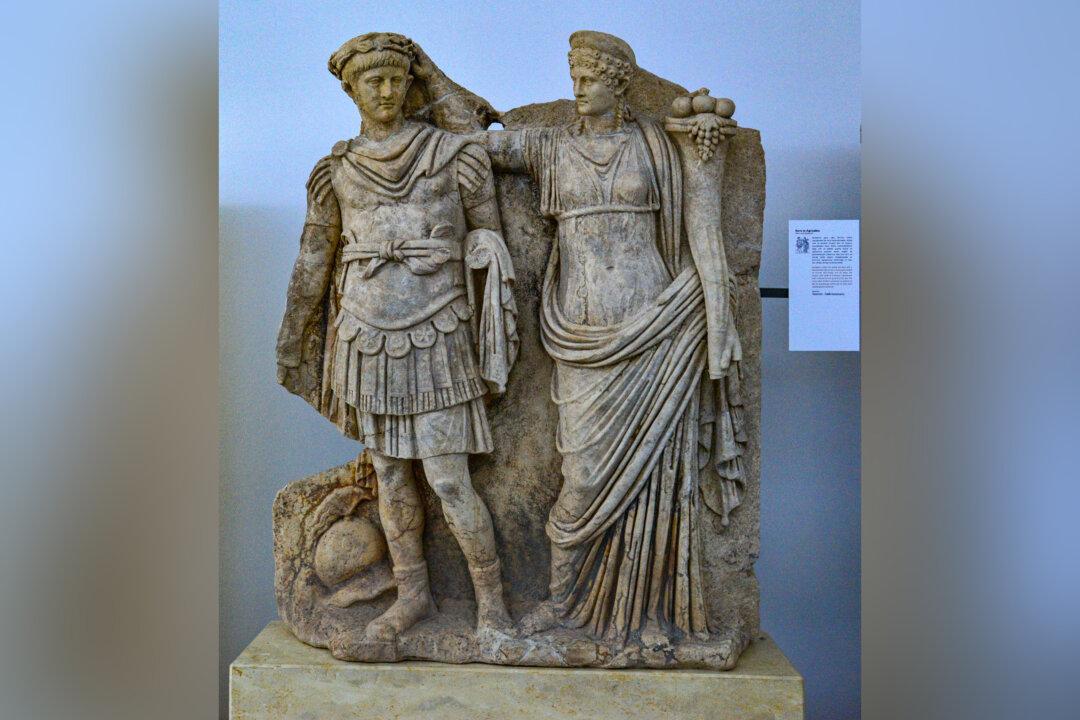Russia sent its prisoners to Siberia (a practice it still maintains) while France sent its to dismal destinations such as Devil’s Island in the Caribbean or New Caledonia in the South Pacific. Portugal transported their malefactors to Brazil or North Africa, while it was customary for the English to send theirs to their North American colonies (including Newfoundland).
The American Revolution meant that the English lost a convenient dumping ground for their criminals, but an alternative was found in Australia which they had recently claimed for King George III. In 1786, the government decided to send hundreds of convicts to New South Wales on the southeastern edge of the continent. A colony there would fortify Britain’s claims to that vast territory and counter any ambitions of the French, Spanish, or the Dutch, who were active in exploration of the Pacific Islands.
Aboard were 582 male prisoners, 193 female prisoners, and 14 children of convict families. Guarding them were 247 marines, with 46 of their wives and children. After a voyage of eight months with stops at the Canary Islands, Rio de Janeiro, and Cape Town, the fleet reached Botany Bay on Jan. 18, 1788. There were 48 deaths during the voyage, mostly male convicts, with 28 babies born en route.

A brief look at the landing site told the expedition’s leadership that Botany Bay, which had been explored on an earlier voyage by Captain James Cook, was not a good site for a colony. Water was scarce, the soil was unpromising, and the bay itself was too exposed to the elements. Scouting parties were sent out to find somewhere more propitious, and a new location was chosen seven miles (11 km) away at what is now Sydney Harbour. The arrival of the fleet there on Jan. 26 marked the beginning of European colonization of the continent, and that date is celebrated annually as Australia Day.
Convicts were kept in line not only by their military guards but also by a system of punishment and reward, with opportunities for better treatment, conditional pardons, and eventually, emancipation. Those who demonstrated good behaviour and skills could gain their freedom and even acquire land, contributing to the development of a free settler society (though it was some decades before many free colonists were able to view freed prisoners as their social equals.)
The convicts had been largely drawn from England’s cities, their literacy was above the norm, and many of them were able to set up as teachers, lawyers, and other professions. A large number of these hired convicts who had come later were assigned to private employers.
However, the system was also marked by brutality and exploitation. Convicts endured harsh punishments, including floggings, solitary confinement, and assignment to chain gangs or remote penal settlements. Female convicts were particularly vulnerable to abuse and exploitation, facing sexual harassment and forced servitude in the homes of free settlers. Unsurprisingly, there was no shortage of escape attempts, bush-ranging, strikes, and rebellions in the history of colonial Australia.
Before penal transportation to Australia ended in 1868, about 165,000 prisoners had been brought to the continent. In addition to New South Wales, five other colonies were planted. In 1901, a federated Commonwealth of Australia was formed on the Canadian model.







